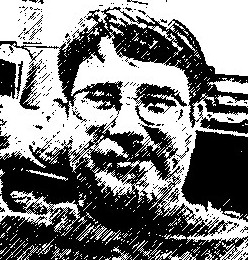This weekend, for the first time in almost 4 decades, the Cotton Brute once more took to the rails.
Old 97 Rail Days, commemorating the wreck of Southern Railroad mail train 97 on September 17, 1903, was held in Danville Virginia at the Pepsi Building on the Danville Science Center campus. The Danville Science Center also encompasses the still active passenger station along what is now the Norfolk Southern line, and has been commemorating the 1903 wreck for the past 20 years.
Part of that event for the past 20 years has been an NTRAK layout made up of modules from 4 of the ten clubs from the Eastern N Lines Partnership; North Raleigh Model Railroad Club, Richmond Area NTRAK, Lynchburg Area N Scalers, and New Jersey Southern N Scale. Lynchburg has since dropped out of the event because they have gone from being an NTRAK club to being a T-Trak club, but we had one member from there at the show.
The first time on the rails was a bit of a mixed bag. Everything seemed to work well (except that the volume, more than adequate in a quiet train room, was woefully inadequate in a noisy show environment) as the Brute traversed the track and then, with no explanation, it coasted to a stop and sat at idle. The horn and bell worked fine, the lights turned on in the proper direction, but the locomotive refused to budge.
The problem was attributed to an issue with DCC decoders and Back EMF (BEMF) on coreless motors, like the one that powers the Brute. Back EMF measures the current load on the motor and adjusts the actual locomotive speed and engine sounds based on the throttle settings. The idea is to prevent the locomotive from slowing down or speeding up excessively when traversing grades. The difference in the current draw of coreless motors as opposed to traditional iron core motors is apparently significant enough that it throws the BEMF settings off.
The answer was to adjust the BEMF settings to basically nullify the function. Once that was done the Brute operated very well, with the only issues being it's refusal to negotiate tight curves (the locomotive is a little over 7 actual inches long) and the alarming tendency to bottom its fuel tank out on any connecting tracks that were bowed upwards. The layout was modified to accommodate the locomotive and after that it ran just fine.
Pictures and videos have been taken, but not by me. Unfortunately I appeared on the scene Sunday morning just a little late to witness the show, but I did get to see the video and I am pleased to have been a part of the results. Sadly, since I did not get any photos of the loco in operation, I have none that I can share with you. However, I am happy to say that forthcoming articles will have pictures and perhaps a video or two as well.
I was asked what I would charge for this job and I refused payment. I have gotten a lot more out of this project than I put into it, and I told the board if they felt it necessary to compensate me they could come up with a figure and credit me with a donation to the club in that amount.
So what did I get out of this project, you might ask? First, I got a chance to be a part of the history of the Cotton Brute, a locomotive I have read about in NTRAK (now NRail) publications but never thought I would get a chance to see in person. Second, I got a chance to expand my modeling skills. I am very proud of the way the reconstruction of those front steps went, for instance, and having done this gives me the confidence to attack similar tasks that need to be done on a couple of my own locomotives. Last but not least is the pure satisfaction of seeing this behemoth tow a cut of cars around knowing that I was the one that put it back on the job.
And that is something that is worth way more than the time and small amount of money I spent on this project.












